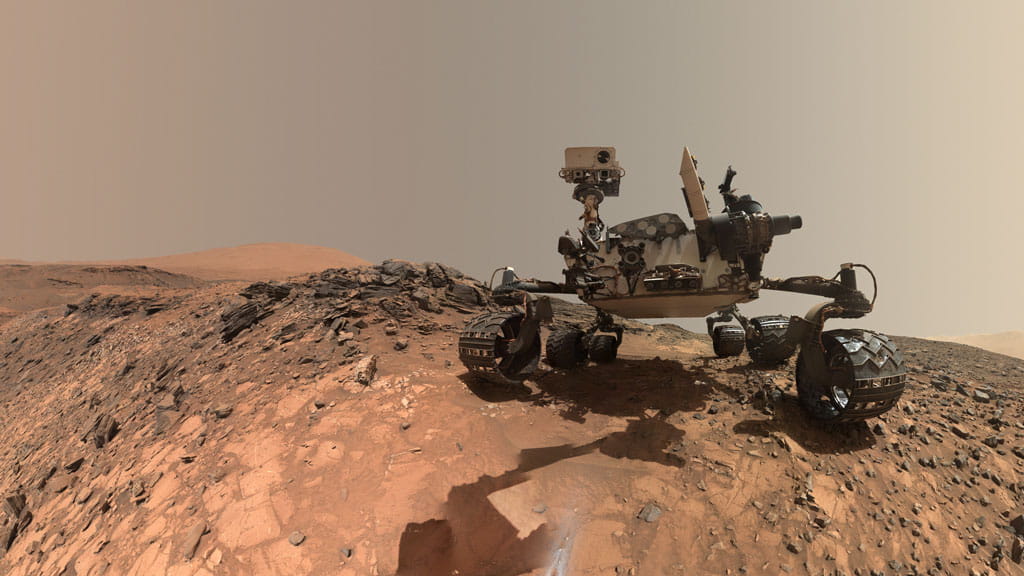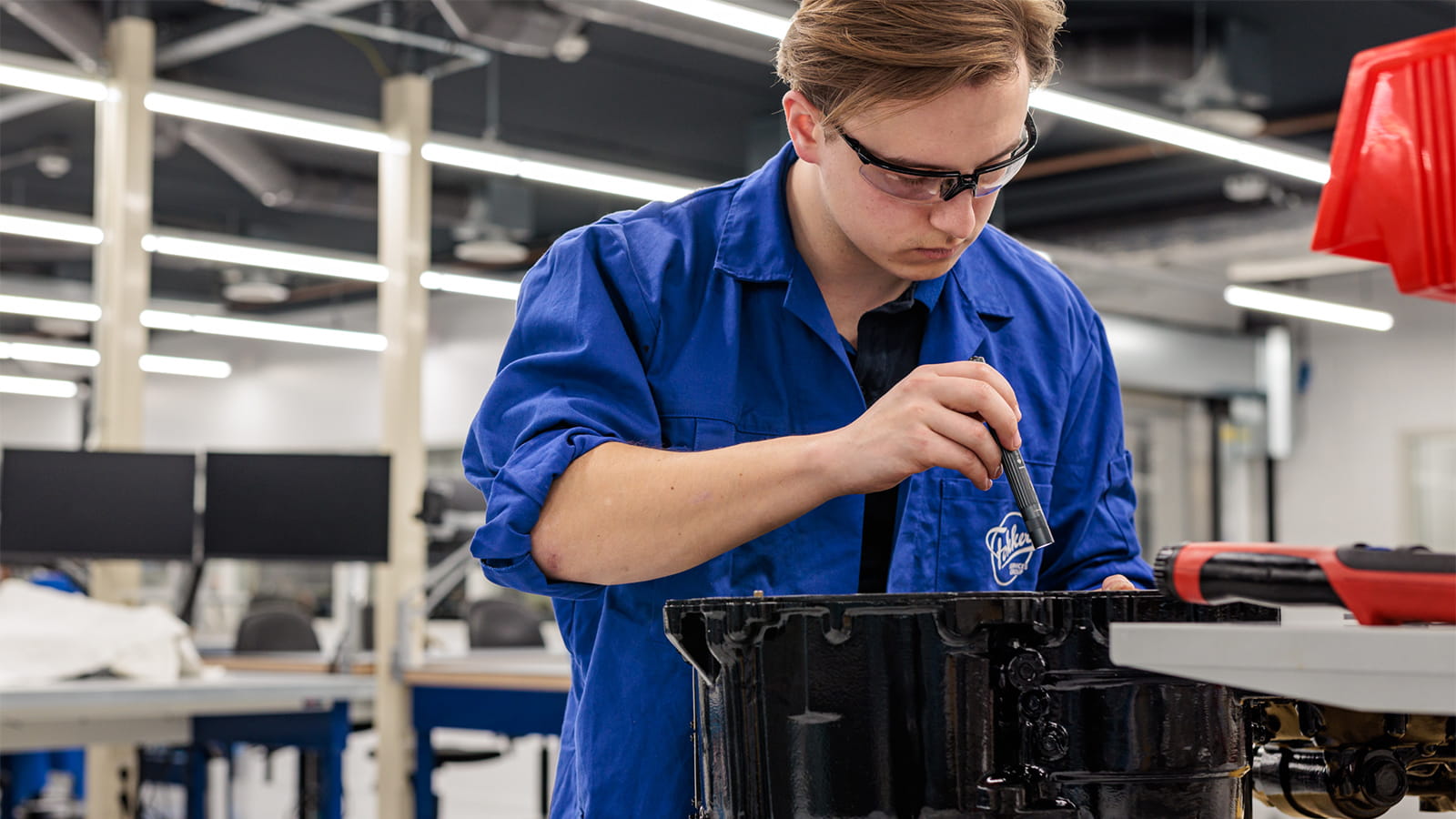Our eyes are [roving] on Mars
Ryan Bronson had his eyes glued to NASA’s YouTube channel on Feb. 18 when the next-generation Perseverance rover entered its final phase of flight and touched down on the surface of Mars.
A self-proclaimed space enthusiast and systems engineer at Collins Aerospace in Carlsbad, California, Ryan had been on the job less than a week in July 2017 when he was assigned the Rover Perseverance build and test schedule.
“Looking back, I can’t believe this was the first project I was given after graduating college,” said Ryan, who earned his bachelor’s degree in optical sciences and engineering from the University of Arizona. “It was a tremendous opportunity.”
Ryan quickly immersed himself in the project. He spent hours sifting through engineering artifacts and conducting requirements reviews. He also worked closely with more than a dozen optical, mechanical and environmental engineers and technicians at Collins to determine the type of optical system needed to help Perseverance safely orient and navigate itself to the most favorable landing spot inside the 28-mile-wide basin known as the Jezero Crater.
A long legacy
It’s not the first time Collins optics have made their way to the Red Planet. Our company has provided lens assemblies on each of the three previous rover cameras for the Jet Propulsion Laboratory (JPL), the lead center for robotic exploration of the solar system in the United States. The lens assemblies allow the rovers to navigate across Mars’ rough terrain, collect geological data, capture panoramic images, and even take stereoscopic 3D images.
In addition to lens assemblies on rovers Spirit, Opportunity, and Curiosity, Collins also developed the Context Camera Telescope (CTX) optics for the Mars Reconnaissance Orbiter. This spacecraft reached the Red Planet in 2006 and captured images of future landing sites.
“Since 2003, either during landing operations or autonomously navigating around hazards, every Mars rover has relied on Collins equipment to operate safely and reliably,” said John Fitzpatrick, value stream manager for the Optronics, Precision and Space Optics value stream within Mission Systems’ Integrated Solutions portfolio. “This is part of our legacy.”
A successful landing
Design and development of the Perseverance lens assembly began in February 2017. Initial delivery of the product for integration with the camera, built by Malin Space Science Systems, took place in January 2018.
The Lander Vision System Camera was mounted to the bottom of the Perseverance rover chassis and pointed downward. It acquired 90-by-90-degree field of view images of the surface of Mars during the rover’s parachute descent phase. Those images helped the vehicle determine its location through correlation with the onboard reference map generated using data from the Mars Reconnaissance Orbiter.
“Watching Perseverance land successfully on Mars and knowing I played a small role in helping to make that safe landing possible was surreal,” said Ryan. “There’s just no explanation.”
Perseverance’s successful landing — coupled with our company’s success on previous rover missions — positions Collins nicely for a potential role in future unmanned and manned missions to Mars.
NASA has announced a proposed mission, Mars Sample Return, being jointly planned with the European Space Agency to return samples from the surface of Mars to Earth. This mission would potentially involve a lander/rover, but contracts have not been awarded. If Ryan and his colleagues have their druthers, Collins optics will be onboard once again.
To learn more about our Optronics precision optical capabilities, click here.



